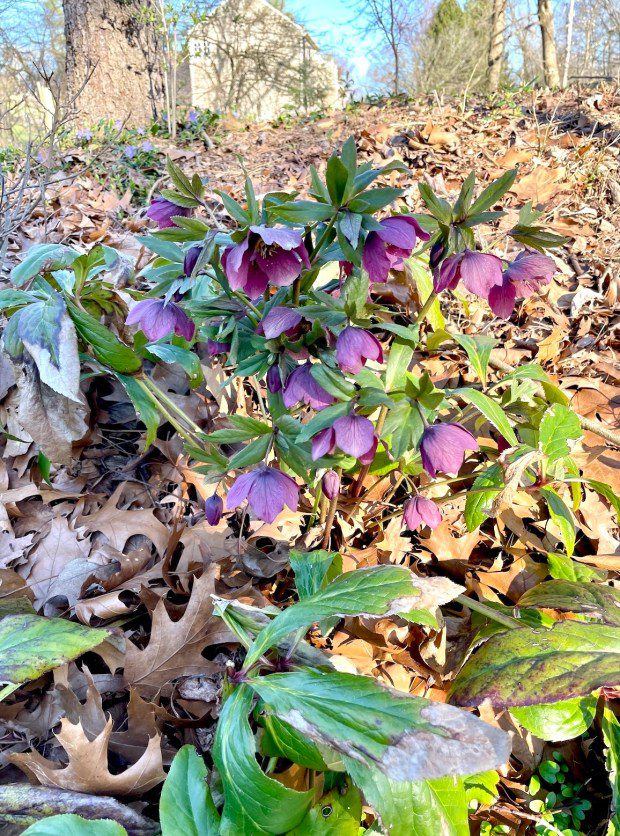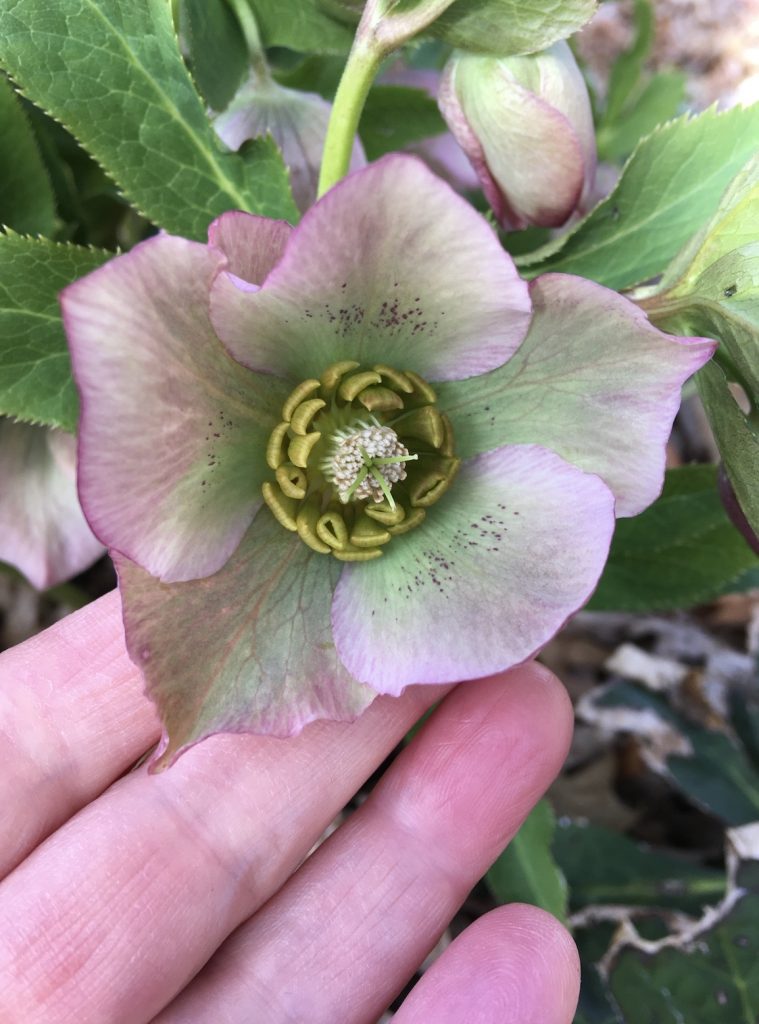Non-native plants usually have a bad reputation; I have criticized many of them here. However, not all non-native plants are invasive or harmful to the environment. Some of our favorite spring flowers, like tulips, daffodils, hyacinths, and crocuses, bring bright colors just when we need them most, and they stay where we plant them without taking over our yards and gardens.
There’s another non-native spring bloomer that I’ve grown to love: the hellebore. Hellebores are also known as “Lenten rose” because they typically flower around the time of Lent. There are many good things about this species and the various hybrids that have been developed. It may take up to five years for a seedling to start flowering, but the wait is worthwhile.
Hellebores are perennial plants and mostly stay green all year; they remain in the garden. They thrive in partial shade; deep shade decreases their flowering. They prefer rich, moist, well-drained soil. Depending on the type, they form mounds about 9 to 18 inches tall and 12 to 24 inches wide, gradually spreading through underground rhizomes.
The drooping flowers are beautiful and come in a range of subtle colors, and hellebores can create a lovely border with brighter daffodils or tulips. The sturdy leaves are interesting enough to make them a key part of the shade garden year-round, even when their flowers are gone.https://tinyurl.com/ms5nucjs)
Another great thing about hellebores for our area is that they contain toxic chemicals that make them safe from being eaten by deer and other wildlife. A side note: Daffodils and snowdrops also contain a toxin – a bitter poison called lycorine – that makes them genuinely deer and rodent proof.
The only drawback of hellebores that I know of is that because the flowers hang downward on their stems, it’s difficult to see the inside of the blossoms. One solution for this is to plant them in higher areas if your property has some slope. I have found this advice to be effective; the hellebores planted under the trees are just above our line of sight, giving us a perfect view of the flowers.

While I was researching the specifics of these plants, I came across some interesting, albeit macabre, historical notes. First, while hellebore was used as a remedy for conditions such as gout, paralysis, and insanity, one of the many theories about the death of Alexander the Great is that he was poisoned with hellebore.
Second, the American College of Emergency Physicians tells us that in 585 B.C., the Greek army used massive amounts of crushed hellebore leaves to poison the water supply of the city of Kirrha. As they put it, “chemical warfare was alive and well in the ancient world.” (https://tinyurl.com/4fxtz3zv)
Pam Baxter is an enthusiastic organic vegetable gardener who lives in Kimberton. You can reach her via direct e-mail at [email protected], or send mail to P.O. Box 80, Kimberton, PA 19442. Pam’s nature-related books for children and families are available on Amazon, at Amazon.com/author/pamelabaxter.









